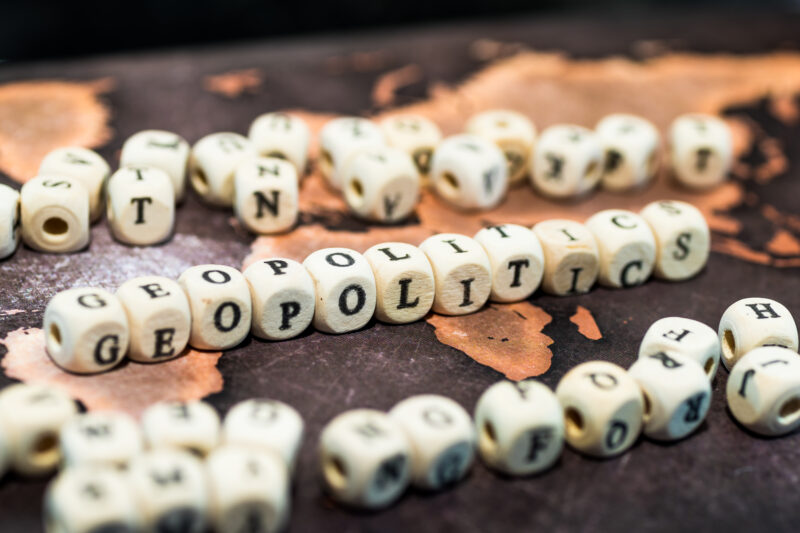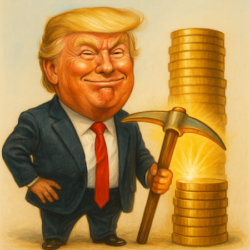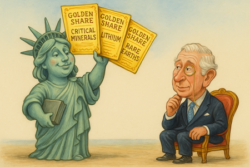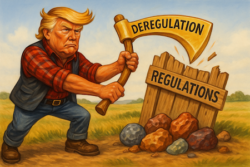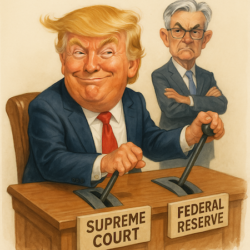This morning, I wrote this to my team:

So I had to write about it.
Everyone’s screaming again.
“Trump’s going to kill the economy!”
“It’s the Great Depression 2.0!”
“Your avocados will cost $39!”
Ignore them.
I’ve read the actual plan. I’ve looked at the data.
Are these fears grounded in reality—or is there a smarter way to understand what’s really going on?
Let’s break it down.
Price Talks. Behavior Follows.
First, the new tariffs.
There are two flavors:
Reciprocal Tariffs
Blanket Tariffs
And yes, Trump is doing both.
Before you freak out, let me give you a rule.
It’s a rule that governs everything from taxes to trade to raising your teenager: Incentivize what you want. Disincentivize what you don’t.
If you want fewer people to smoke, don’t write them letters from the Surgeon General. Just raise the price of cigarettes.
Boom—smoking goes down. Nobody listens to advice. Everyone listens to prices.
Same principle applies here.
And here’s what you need to keep in mind.
The Customer Is Always Right
America’s the world’s biggest customer.
We spend $3.17 trillion a year buying stuff from other countries. That’s more than the GDP of most of them.
Now imagine you’re the biggest spender in the world—and your suppliers start taxing you just to buy their stuff.
What did we do before? Smile. Nod. Take it.
Trump? He’s doing something different: he’s saying “no.”
That’s the reciprocal tariff.
If a country slaps a tariff on us, we slap one back—but only half as much. That’s it. No vengeance. Just math.
So the media’s outrage machine? It’s pretending this is a war. It’s not. It’s leverage.
Business 101: don’t piss off your biggest customer.
These tariffs are a message: “Play fair or lose access.”
Guess what happened last time we did this?
Remember the last trade war? No? That’s because it didn’t destroy the economy.
In fact:
GDP went up
Inflation stayed low (1.5%–1.9%)
The stock market soared (up over 40% between 2018–2020)
Oh, and…
China caved: Agreed to buy $200 billion of U.S. goods. Promised to crack down on IP theft.
Mexico folded: Dropped tariffs, raised wages, moved part of their auto supply chain away from China.
Result? 30,000 new jobs in the U.S. auto industry. Win-win.
That’s not economic suicide. That’s called negotiating with leverage.
What About the Blanket Tariff?
This is the controversial one.
Trump wants a 10% blanket tariff on all imports. The media says it’ll “destroy the world economy.”
They love to bring up Smoot-Hawley—the 1930s tariff that supposedly caused the Great Depression.
Except…
Smoot-Hawley was a 50% tariff. Trump’s is 10%. And more importantly, Smoot-Hawley was about shutting out the world. Trump’s version is about:
Raising money
Gaining leverage
Shifting the supply chain home
$3.3 trillion in imports × 10% = $300 billion in new revenue. That’s just math.
Now imagine this: take that $300 billion, and cut personal income taxes with it.
Boom—stimulus without printing money. Imagine that.
Will it cause inflation?
Short answer: no.
Look at the data.
In 2018–2020, tariffs went up. Inflation? 1.5%–1.9%.
In 2021, the U.S. printed 40% of all dollars in existence.
In 2022, inflation hit 9%.
Tariffs didn’t cause inflation. Money printing did.
The Real Takeaway
Let’s zoom out.
This isn’t about isolationism. It’s not about xenophobia. It’s about leverage.
We’re the biggest customer in the world. We get to say, “These are our terms.”
The tariffs will:
Increase US govt revenues + GDP
Be used to lower taxes
Encourage fair trade
Not cause inflation
Force countries to negotiate (e.g. lower tariffs, help border, etc)
Onshore American industry
The only question British investors should ask is this:
What happens when the world’s biggest customer rewrites the rules—
and you’re holding stocks that depend on the old ones?
Because this is happening. And it will ripple globally.
In fact, it already has.
Trump’s latest executive order didn’t just change the rules of trade—it quietly reactivated a forgotten financial mechanism buried deep in U.S. law.
One that could unlock an estimated $150 trillion in untapped American wealth.
And here’s what most UK investors don’t realise: You can legally claim a stake.
Jim Rickards breaks it all down in his urgent new briefing: “The American Birthright”.
If you’re holding assets tied to the old system, now’s the time to understand what’s replacing it.
Click here to watch the full breakdown—before the next shock hits.
Best,

James Altucher
Contributing Editor, Investor’s Daily
P.S. As said above, this $150 trillion dollar opportunity isn’t a theory—it’s already in motion. Watch while there’s still time.
